Use Your Desk Phone at Home
Learn how to set up your desk phone in your home for easy and efficient communication.
Table of Contents
Will My Desk Phone Work at Home?
Depending on how your phone was configured for operation on your office’s network, you may be able to use your phone at home. As long as the phone can receive power and a reliable, uninterrupted internet connection, the phone should be ready for use at home.
To set up the phone at home…
Step 1: Assemble the Phone
The first step to setting up a Yealink phone for the first time is to assemble it. Yealink phones are easy to put together as only the stand piece and handset need to be attached.
Attach the Stand
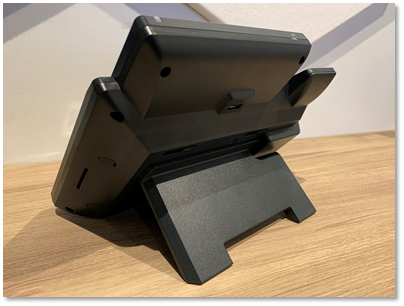
The stand piece can attach to the back of the Yealink phone to allow the phone to be placed at an angle on a desk. Insert the back of the phone at your desired angle level.
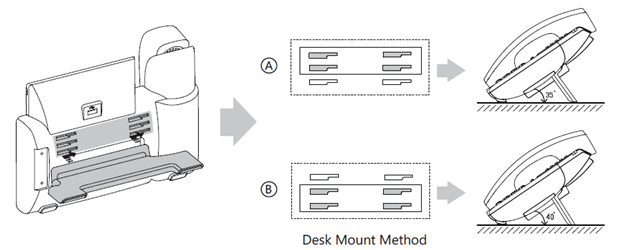
Connect the Handset
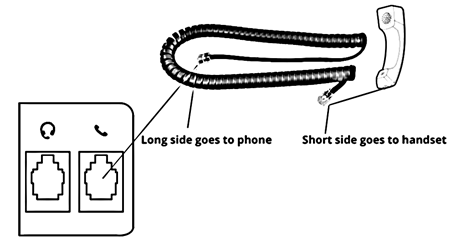
In order to use the handset with the phone, the handset needs to be connected.
- Plug the short side of the handset cable into the handset.
- The longer side should be plugged into the handset port on the back of the phone. This port is marked with a phone icon.
To help keep the cable in place, insert the cable behind the cable management tabs.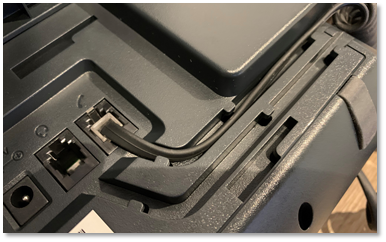
Step 2: Power and Connect the Phone
Since these phones are computing devices, they will require a supply of power and a robust, stable connection to the internet.
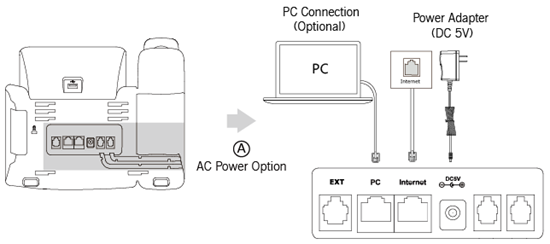
Power Up the Phone
There are two ways a Yealink phone can be connected to a power supply:
- PoE (Power over Ethernet) – Requires a PoE Switch or equivalent and an ethernet cable.
- AC power – Requires a Power Adapter (DC 5V)
Note: Your system administrator can advise you on which to use.
Power over Ethernet (PoE)
The Yealink phone can be powered from a PoE-capable switch or hub with a regular ethernet cable.
To do so…
- Connect the ethernet cable to the Internet port of the phone
- Plug the other end of the cable into an available port of the PoE-capable switch.
AC/DC Power Adapter
If Power over Ethernet (PoE) cannot be utilized, a power adapter can be used. Plug the power adapter into an electrical power outlet and the circular end into the DC5V port.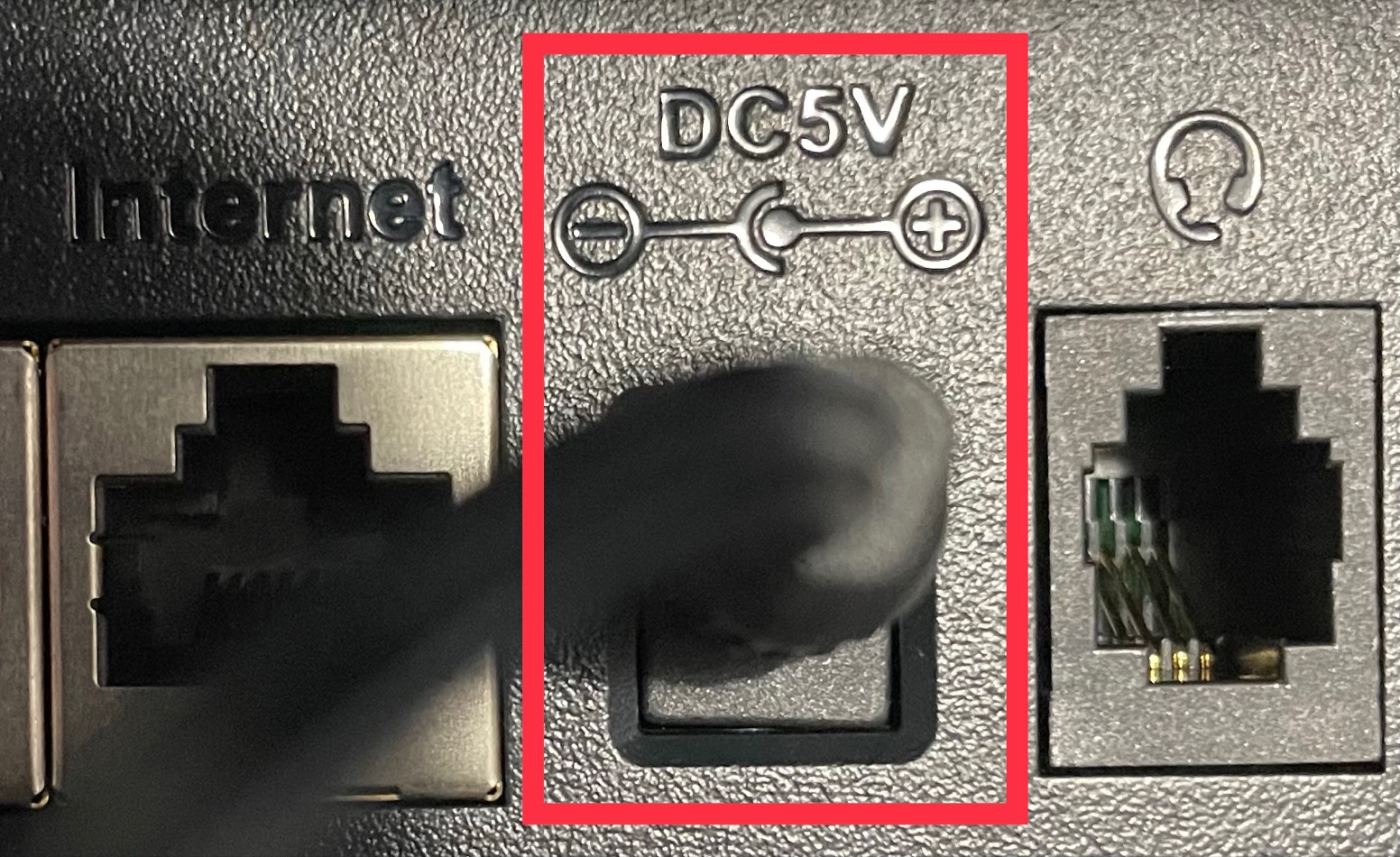
Get a Connection to the Internet
To place calls or update itself, the phone will need to be connected to the internet. Yealink phones can receive an internet connection through ethernet, Wi-Fi, and daisy chaining.
WARNING: After following these steps, do NOT remove the power source (Power Adapter or Ethernet Cable using PoE) from the phone while it updates its firmware and configuration.
Connect with Ethernet Cables
To connect a phone to the network using ethernet, connect an ethernet (RJ45) cable to the Internet port of the phone and then connect the other end of the cable to a source of internet. 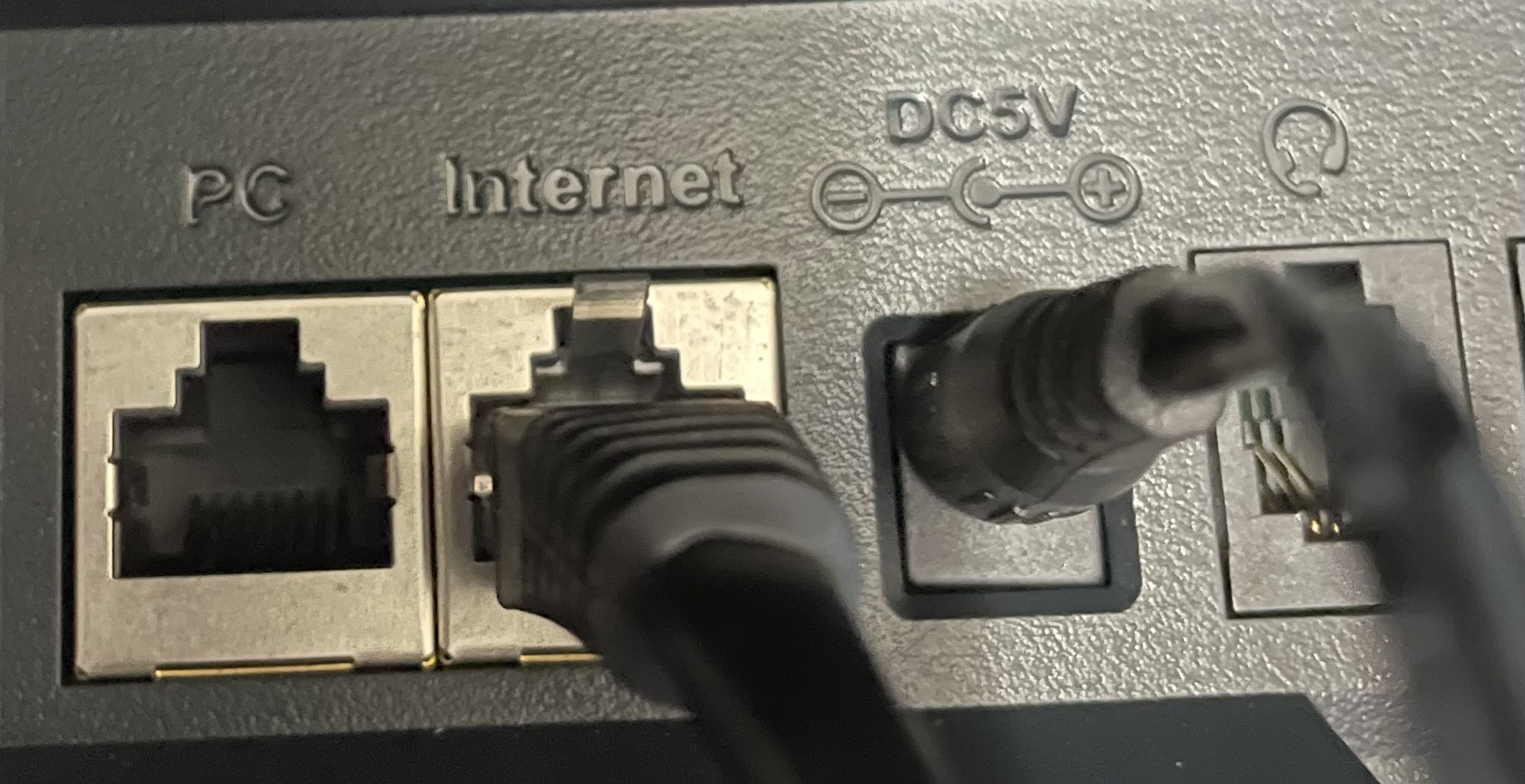
Quick Tip: The source of internet can be an ethernet port in the wall, router, switch, PC, and even another IP phone.
Use Wi-Fi to Connect
When it is not possible to use ethernet cables to connect a phone to the internet, Wi-Fi can be used on the phones.
Plug in a Wi-Fi Adapter
Depending on the model of the phone, a Wi-Fi Adapter may be needed to allow the phone to scan for networks. If one is needed, plug a Wi-Fi adapter dongle into the USB port on the back of the phone.
Turn on Wi-Fi Mode
- Push the Menu softkey and select 3. Settings.
- In the Setting Type menu, select 1. Basic Settings.
- In the Basic Settings menu, select 8. Wi-Fi.
- Press the Switch softkey. Alternatively, hover over the 1. Wi-Fi option and use the left or right arrow buttons to select On.
- Press the Save softkey.
Connect to a Network
With the Yealink phone's Wi-Fi adapter connected and Wi-Fi mode turned on, the phone can now scan for networks. To get the phone connected to an available network…
- On the prompt to scan for available networks, press OK.

- In the Wi-Fimenu, use the arrow buttons to hover over # available network(s). If this phone is re-connecting to a network, hover over Known Network(s).

- Press the OK button.
✓ Now you should have a list of Wi-Fi networks that are available for you to connect to.
- Use the arrow buttons to find your network.
Quick Tip: Look for the network's SSID (Service Set Identifier).
- Press Connect.

- In the Password box, type in your network's password using the dial pad.

- If needed, use the 123 softkey to switch input modes.
Note: The input methods are 123 (numbers only), abc (lower case letters), ABC (upper case letters), and 2aB (all three).
To get the letter you need you will press the associated number until you see that letter pop up.
- For example, if your password starts with an uppercase “V”, you will want your input mode to be set to ABC before pressing the number 8 on the dial pad 3 times.For any special characters, you will need to use the * key.
- Once you have the password typed in, press the OK button to connect.
Use a Daisy Chain
Our phones can pass along a network connection to another IP device (such as a computer or another phone) through Daisy Chaining.
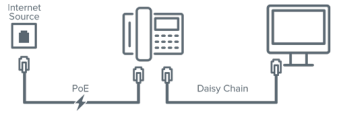
Daisy chains are used for connecting devices when there is only one point of connection to the network available. This technique is handy when a router or switch has all of its ports full or a room that is missing an ethernet port in the wall.
To daisy chain devices together…
- Plug an extra ethernet cable into the PC port of the connected phone.
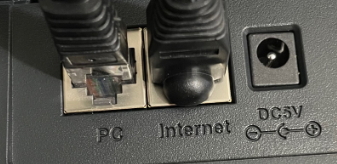
Note: The PC port may appear with an icon that looks like a computer instead of saying “PC”.
- Plug the other end of the cable into the Internet port of the second phone.

Warning: The second phone/device will need a power adapter connected since the first phone will not be able to pass along a PoE connection.
Your provider cannot guarantee call quality or reliability for phones not on the provider’s data network.
In addition, E911 services might not work properly when removing a phone from the office.
Checking the Home Network
It is a good idea to contact the home network's Internet Service Provider (ISP) and ask that a technician check the network's health and bandwidth management to ensure the phone will be able to receive a robust, uninterrupted connection. They can also further diagnose and treat any issues identified on the network during their check.
To ensure that the Quality of Service (QoS) is excellent for calls, it may be necessary to re-configure the home network equipment's (router/modem, firewall, etc.) settings to ensure that SIP traffic (used by the phones) is not being interrupted or altered. You can also request that they try to set up the network equipment to prioritize SIP traffic.
To do so, we recommend calling the provider of the network equipment and requesting that they adjust the settings listed in our "Recommended Router and Firewall Settings" guide.
Troubleshooting a Remote Phone
In the unlikely event you encounter a problem using the phone at home, consider the
following these troubleshooting suggestions to explore the issue further:
| Problem | Corrective Action |
| Phone has reliability (e.g., calls disconnect, call delays, phone ringing after answering, unable to receive calls, etc.) and audio quality (one-way audio, choppiness, etc.) issues. |
There might be a problem with your home network. Ensure that your network does not have double Network Address Translation (NAT) or SIP Application Layer Gateway (ALG) enabled on the router. Your Internet Service Provider (ISP), Managed Service Provider (MSP), or IT team can reconfigure your home network to match our recommended firewall and router settings. |
| Your home router is in a different room from the phone, and Ethernet wiring isn’t available between the rooms. |
Consider using a HomePlug Powerline solution.
|
| Phone does not work at all. |
Please contact our technical support team by calling (469) 429-2500, dialing HELP (4357), or emailing a support ticket to support@spectrumvoip.com. Before calling, have the phone’s MAC address ready by looking at the sticker on the back of the phone. |
| Phone can make and receive calls well, but the call quality or reliability is poor. |
|